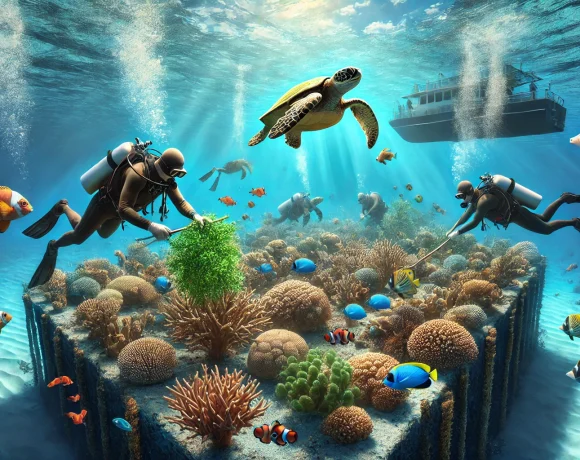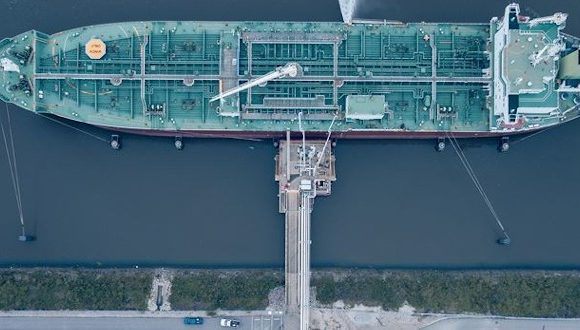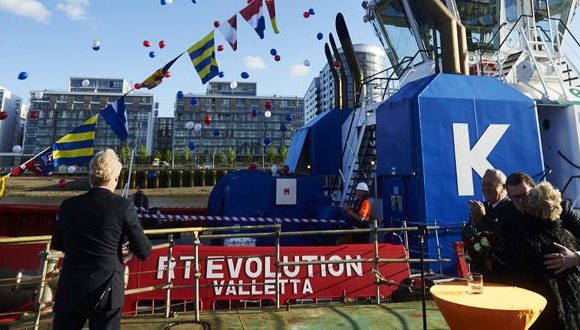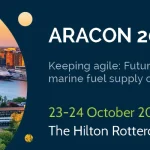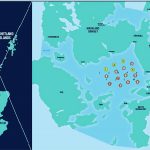Marine Ecology News Digest May 2025
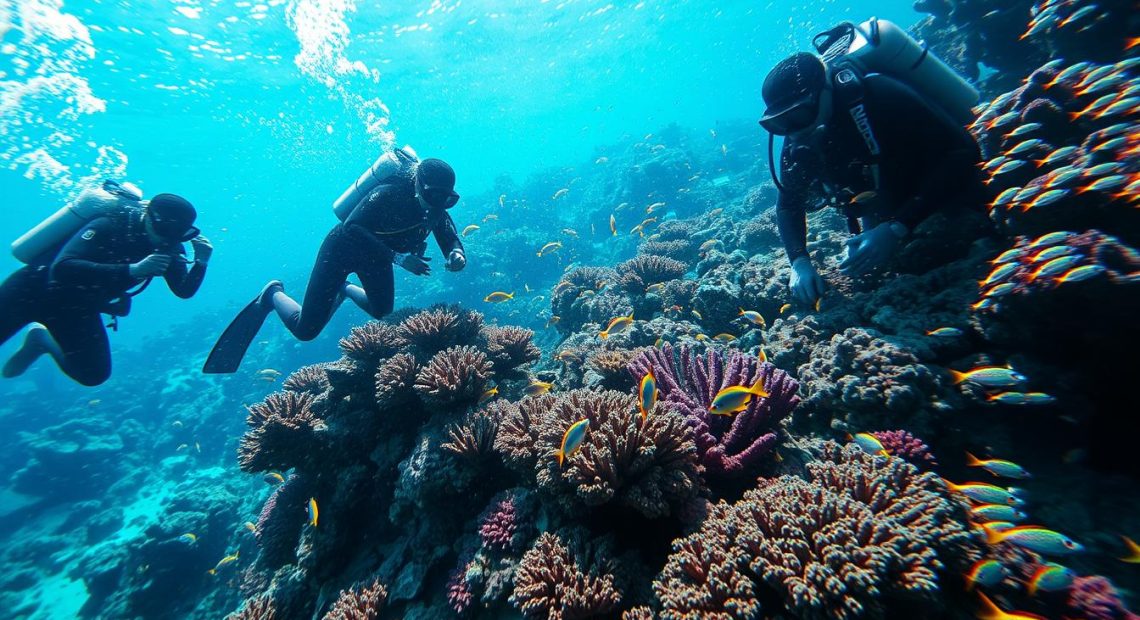
The first quarter of 2025 has shown worrying changes in our oceans. New monitoring tools let scientists track these changes with great detail. This gives important information to both industry experts and those who want to protect the sea.
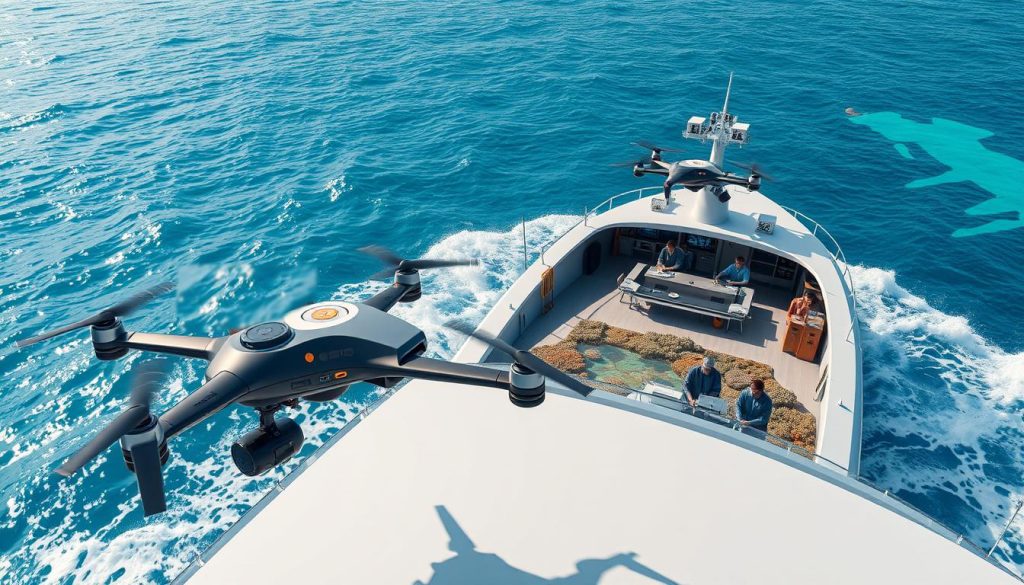
This digest brings together the top news from May 2025. It includes vital information from leading research institutions, government bodies, and conservation groups worldwide.
Recently, we’ve seen big steps forward in fixing coral reefs and worrying news about sea temperatures rising. In British waters, new policies will change how we work and protect the sea.
As marine biodiversity faces big challenges, our digest shows new ways to help. We see things like better fishing and community projects. These show the sea industry is trying to be more eco-friendly.
Each part of our digest dives into the latest research. It gives readers useful tips on how to balance sea work and caring for the environment. This is important as climate change gets worse.
Global Marine Ecology Breakthroughs This Month
This month, marine ecology has seen a major leap forward. Researchers worldwide have made discoveries that could change how we protect our oceans. The UK marine science community has played a key role in these breakthroughs. Their work comes at a critical time, as our oceans face big challenges from climate change and human actions.
Recent research shows the power of working together. International teams are exploring new marine environments faster than ever before. They’re using advanced tech to study marine life and ecosystems in detail. This could lead to new ways to protect our oceans globally.
Groundbreaking Research from UK Marine Laboratories
British research institutions are leading the way in marine ecology this month. The UK’s top marine laboratories have found new things about our oceans. They’re using old and new methods to learn more about marine life.
These discoveries are very important. They help us understand how climate change affects British waters. They also give us ideas for better ocean protection and sustainable use of resources.
Plymouth Marine Laboratory’s Deep-Sea Ecosystem Findings
Plymouth Marine Laboratory has explored the deep sea and found amazing things. They used special vehicles to see life in extreme depths. These discoveries could change biotechnology and medicine.
Their research also shows how the deep ocean helps control the climate. This new knowledge is key for managing resources and understanding environmental impacts.
University of Southampton’s Hydrothermal Vent Discoveries
Scientists at the University of Southampton have found new life in hydrothermal vents. They found microbes living in very hot environments. These microbes could help us develop new industrial processes.
Their work also helps us understand where life on Earth came from. It shows how life can survive in extreme conditions, which is important for space exploration.
International Collaborative Research Initiatives
International marine research has made big strides this month. Working together, scientists have made discoveries they couldn’t have made alone. These partnerships bring together different skills and resources to solve big questions.
Sharing data and methods across borders has opened up new ways to study our oceans. This teamwork is key for tackling big marine conservation challenges together.
UK-Australia Joint Expedition Results
The UK-Australia joint expedition has mapped new seamounts in the South Pacific. They found many new species, showing the incredible diversity of these underwater mountains. They used advanced tech to study these areas without harming them.
Their findings show how important these seamounts are for species migration. This knowledge will help protect these areas for future generations.
North Atlantic Research Alliance Developments
The North Atlantic Research Alliance has studied ocean currents and found big changes. They used a network of equipment to track these changes. Their data shows that ocean currents are changing faster than we thought.
This is important for marine life and for ships in the North Atlantic. The alliance is working on tools to help communities and industries adapt to these changes.
Coral Reef Restoration Projects Making Headlines
Groundbreaking coral restoration projects have caught the world’s attention this month. Marine scientists and conservation teams have made huge strides in their fight to save reefs. They are using new technology and knowledge to help these vital marine ecosystems.
The need to save coral reefs is urgent. Reefs face threats from climate change, pollution, and harmful fishing. But, the projects this month show that with research and investment, reefs can recover.

Revolutionary Coral Propagation Techniques Unveiled
This month, new ways to grow corals have been revealed. The National Oceanography Centre in Southampton has found ways to grow corals up to 50% faster. They have improved how nutrients and light reach the corals, changing how we grow them for reefs.
Scientists have also created “reef modules” for coral growth. These 3D-printed structures are filled with different coral species. They help create complex reef habitats when placed in the ocean.
Lab-Grown Coral Deployment in Caribbean Waters
May 2025 saw a big achievement with over 15,000 lab-grown coral fragments planted in the Caribbean. These corals, grown using new techniques, have a survival rate of 85% after six months. This is much better than before.
Local teams and UK scientists worked together to place these corals in the best spots. This is one of the biggest coral restoration efforts in the Caribbean.
Heat-Resistant Coral Strains Development
The University of Exeter has made a big breakthrough. They have created corals that can handle higher temperatures. These corals can survive 2°C warmer than their parents.
These corals could help reefs as the sea gets warmer. Early tests show they stay healthy when other corals bleach.
Success Stories from Global Restoration Efforts
There are many success stories in coral reef restoration this month. These show that with the right methods, reefs can recover quickly. This is thanks to the hard work of scientists and conservation teams.
These successes are special because of the scale and teamwork involved. By mixing old and new methods, teams are making reefs stronger and faster to recover.
Great Barrier Reef Recovery Zones
Some areas of the Great Barrier Reef are showing big improvements. Coral transplantation and removing starfish have increased coral cover by up to 25% in a year. This is much better than areas without these efforts.
These zones are helping scientists learn the best ways to restore reefs. The data they collect is key to keeping the reef healthy for the future.
Mediterranean Coral Rehabilitation Progress
The Mediterranean’s coral programme has seen huge success this May. A new method that combines coral gardening and genetic selection has helped several reefs. This has brought back many fish species that left damaged habitats.
Red coral populations, which had dropped by over 80% in some places, are now recovering. This not only restored coral but also brought back fish that had left.
British Contributions to Coral Conservation Technology
UK research institutions are leading in coral conservation technology. They have announced several new innovations this month. These include better monitoring systems and genetic tools to help restore reefs.
British scientists are using knowledge from robotics, genetics, and materials science to tackle coral challenges. Their work shows how different fields can come together to solve ecological problems.
Scottish Marine Institute’s Coral Genomics Programme
The Scottish Marine Institute has made big strides in coral genomics. They have found genetic markers that help corals resist climate change. This allows scientists to find corals that can handle future ocean conditions.
They have also developed a portable genetic testing kit. This lets researchers check coral health without harming the reef. This is a big step forward in conservation genetics.
UK-Funded Coral Nurseries in Overseas Territories
British Overseas Territories have coral nurseries funded by the UK. These nurseries are testing grounds for new restoration methods. They are in the Caribbean and Indo-Pacific and are places of innovation.
The nurseries use a “coral farm” approach. Corals are grown in a controlled environment before being planted out. This has increased survival rates by 40%, setting a new standard for coral restoration.
Ocean Conservation Initiatives Across British Waters
British waters are seeing a big push in conservation this May. Many new projects are changing how we protect our oceans. This is thanks to teamwork between the government, scientists, and local groups.
North Sea Protection Zones Expansion
The North Sea is a key area for British waters conservation this month. More protected zones have been added to protect important marine habitats. New fishing rules have been set up to help both nature and the fishing industry.
This is a big win for everyone involved. The UK government, fishing groups, and conservationists worked together. Their partnership shows how we can protect our oceans while keeping coastal jobs.
Dogger Bank Conservation Status Update
Dogger Bank has got stronger protection this May. New steps are being taken to keep its sandbanks safe. These sandbanks are key for many fish to grow and thrive.
Now, there are systems to watch how the bank and fish are doing. Early signs show the bank is getting better after being overfished.
New Protections for North Sea Harbour Porpoises
Harbour porpoises in the North Sea now have better protection. There are special sound-tracking systems to follow porpoises and find their homes.
New rules have been made to help porpoises. Fishing gear has been changed to be safer for them. The fishing community is supporting these changes, showing they care about the future of their work.
Celtic Sea Biodiversity Monitoring Programme Results
The latest Celtic Sea biodiversity check-up shows both good news and challenges. A big monitoring project has been running for three years. It helps us understand how healthy the sea is.
Good news for fish like cod and haddock, their numbers are up by 18%. But, deep-sea creatures are facing big problems from changes in the sea and old fishing ways.
Basking Shark Population Survey Findings
May’s basking shark count shows a small increase in the Celtic Sea. Researchers found 127 sharks, a 15% rise from last year.
Tracking sharks with satellites has shown new paths they take. This information is helping to make plans to save these amazing creatures.
Seabird Colony Recovery Efforts
Seabirds in the Celtic Sea are doing better thanks to new efforts. Work to fix their homes and keep predators away is paying off. This is helping more birds to nest and raise their young.
Puffins on Skomer Island are up 7% this season. Manx shearwater numbers are also getting better. These successes show that focused conservation work can make a big difference.
Community-Led Conservation Efforts Along UK Coastlines
Citizen science conservation is booming this May. People living by the coast are playing a big part in protecting their seas. Their work adds to bigger government plans and gets more people involved in saving the ocean.
Local knowledge is key in finding what needs protecting and how to do it. Over 120 community groups around the UK are working together. They are making a big difference for the sea.
Citizen Science Seagrass Mapping Projects
Volunteers have found new seagrass meadows along the UK’s south and west coasts. These areas are important for absorbing carbon and helping fish grow.
The data from these citizen science conservation projects is helping to plan better for the sea. It’s being used to decide where to create more UK marine protected areas.
Local Beach Cleanup Initiatives Impact Assessment
Beach cleanups across British coastlines removed 12 tonnes of trash in May. This effort has cleaned up 78 beaches. The waste analysis is helping to find out where the pollution comes from.
These cleanups are not just good for the environment. They also bring people together and teach them about ocean conservation. Many people are now making greener choices in their daily lives.
Climate Change Impacts on UK Marine Ecosystems
May 2025 data shows UK marine ecosystems facing significant stress from climate change. Rising sea temperatures are changing underwater habitats quickly. Monitoring stations across British waters have shown worrying trends that need urgent action.
Climate scientists have found a 0.5°C increase in sea temperatures around the UK in the last decade. Some areas are warming at nearly twice the global average rate.
Rising Sea Temperatures: May 2025 Data Analysis
The May 2025 temperature readings from marine monitoring stations show a worrying rise in sea temperature rise across UK waters. Thermal imaging satellites and autonomous monitoring buoys have shown unprecedented warming patterns. The North Sea and English Channel are warming at nearly double the global oceanic warming rate.

The North Atlantic region near UK waters has shown alarming temperature anomalies this spring. Data from deep-sea monitoring stations shows waters off Scotland’s west coast are 1.2°C above historical May averages. This warming is stressing cold-water coral reefs, with scientists seeing bleaching in 28% of surveyed sites.
These temperature spikes are disrupting the delicate balance of marine ecosystems. They affect everything from plankton blooms to predator-prey relationships.
Irish Sea Warming Trends
The Irish Sea shows some of the most concerning marine climate impacts this month. Temperature profiles show intensified thermal stratification, creating distinct warm surface layers. This prevents vertical mixing and has reduced oxygen levels in bottom waters by up to 15% compared to previous years.
Marine biologists have found declining health in benthic communities. Oxygen-sensitive species are showing particular vulnerability. The stratification period has extended by nearly three weeks compared to a decade ago.
Adaptation Strategies for Marine Species in British Waters
As UK waters continue warming, marine life must adapt or face local extinction. Scientists and conservation organisations are documenting these changes. They are implementing strategies to support UK marine adaptation.
Several innovative approaches are showing promise in building ecosystem resilience. Despite challenging conditions, these strategies are helping.
Species Migration Patterns Observed This Spring
Tracking studies this spring show accelerated species migration northward. Organisms are seeking cooler waters. Commercially important fish like cod are moving approximately 6 kilometres northward annually, disrupting traditional fishing grounds and marine food webs.
Warm-water species from the Bay of Biscay, including anchovies and sardines, have established breeding populations in southern UK waters. These shifts create challenges for established fisheries but also opportunities for new sustainable harvesting practices.
Habitat Restoration for Climate Resilience
Innovative climate resilience projects are underway across the UK coastline. They focus on protecting and expanding blue carbon ecosystems. Seagrass restoration initiatives in Wales and Scotland have successfully replanted over 20 hectares this year, providing habitat while sequestering carbon.
Salt marsh regeneration projects along the east coast offer natural coastal protection against increasingly frequent storms. These nature-based solutions show how strategic conservation can help marine ecosystems adapt while providing climate mitigation benefits.
Sustainable Fishing Practices and May 2025 Policy Updates
This month, the UK is changing how it manages its fishing. It’s moving to a new way called Ecosystem-Based Fisheries Management (EBFM). This change looks at the whole ocean, not just one fish at a time. It aims to help both fishing jobs and protect the sea.
Post-Brexit Fisheries Management Developments
After Brexit, the UK’s fishing rules are getting a big update. The new EBFM brings big changes to how we manage the sea:
- Adaptive management protocols that respond to real-time changes in fish populations
- Integration of advanced satellite technology for vessel monitoring and compliance
- Comprehensive assessment of fishing impacts on both ecosystems and coastal communities
- Multi-stakeholder governance involving fishers, scientists, and conservation groups
May’s fishing quotas are based on this new approach. The Department for Environment, Food and Rural Affairs has given more herring quotas in the North Sea. But, it’s also cutting cod stocks to protect them. This helps the sea and the fishermen in the long run.
UK-EU Fishing Cooperation Framework
Even with Brexit, the UK and EU are working together on fishing. They have a new plan for sharing science and protecting the sea. This month, they’ve made it easier to work together and enforce rules in shared waters.
Technological Innovations Reducing Bycatch
British fishing is getting smarter to cut down on bycatch. New tech is making fishing better for the sea.
AI systems are now watching what fish are caught in real time. This revolutionary fishing technology lets crews release the wrong fish before they’re caught. It’s making fishing safer for all sea creatures.
Smart Net Technology Trials in Scottish Waters
Scotland is testing smart nets this month. These nets use sensors to know what fish are caught. If it’s the wrong fish, the net changes to let them go. So far, it’s cut down on unwanted catch by 67%.
Acoustic Deterrent Devices Effectiveness Study
A study this May shows how well sound devices keep marine mammals safe. These devices scare away dolphins and whales without harming fish. They’ve cut down on sea mammal bycatch by up to 85% in some UK fisheries.
Collaborative Efforts Between Fisheries and Conservation Groups
This month, fishing and conservation groups are working together. They’re finding ways to protect the sea and support fishing jobs.
Industry-Led Sustainability Certifications
The UK Sustainable Seafood Coalition has a new way to reward good fishing. These industry-led sustainability standards are getting more attention. Big shops are paying more for fish caught the right way. This helps fishing be better for the planet.
Fishermen-Scientist Data Collection Programmes
Fishermen and scientists are teaming up to learn more about the sea. They’re using special gear and training to gather important data. This helps make fishing rules fairer and more effective.
Marine Pollution: May 2025 Challenges and Solutions
Recent studies on marine pollution in May 2025 show a mix of problems and solutions. Plastic waste in our oceans is a big issue, but new tech and laws are helping. This month, we see both the big challenges and the steps being taken to solve them.
Latest Microplastics Research Findings
A study by the University of Liverpool has given us important info on microplastics research in the Irish Sea. It found high levels of tiny plastic particles in UK waters. This is bad news for marine life and could affect human health too.
Microplastic Concentrations in UK Coastal Waters
Researchers found an average of 5.7 microplastic particles per cubic metre of seawater. Places near cities had even more. Textiles and packaging are the main culprits, with synthetic clothes and single-use containers being the biggest offenders.
Seasonal changes were linked to tourism and farming. This shows how human activities impact our oceans.
Biological Impact Studies on Native Species
“This study is a big step forward in understanding microplastic pollution,” says Dr. Emma Clarke, the lead researcher. “We found that focusing on busy times could really cut down pollution.” The study also warns about microplastics in fish and shellfish, which could reach us through food.
Successful Cleanup Initiatives Around British Isles
Several ocean cleanup projects have shown great success this month. They use new tech and community help to tackle pollution. These efforts aim to clean up old pollution and stop new from happening.
Thames Estuary Restoration Project Milestones
The Thames Estuary Restoration Project has made big strides this May. They’ve removed over 12 tonnes of plastic and restored 3 hectares of habitat. Volunteers and special boats have cut plastic pollution by 47% and improved water quality.
Offshore Wind Farm Debris Removal Operations
A team of renewable energy and marine groups has started a big clean-up around wind farms. They use underwater robots to collect over 8 tonnes of waste and fishing gear. This helps protect the sea floor and its creatures.
New Legislative Measures Addressing Ocean Pollution
May 2025 saw big steps forward in plastic pollution legislation in the UK. New laws aim to control more products and industrial activities. These changes show the public’s desire for cleaner oceans and healthier marine life.
Single-Use Plastics Ban Extension
The UK government has widened the ban on single-use plastics. Now, more products like plastic-lined paper and certain food packaging are banned. Companies have 18 months to find new materials and set up recycling systems.
Industrial Discharge Regulations Enforcement
New industrial discharge regulations started this month. They require better monitoring and have harsher penalties for breaking the rules. The rules use advanced tech to track pollution in real-time. This means big fines for those who don’t follow the rules, pushing companies to be cleaner.
Emerging Technologies in Marine Ecological Monitoring
Autonomous systems, satellite tech, and AI are changing how we monitor marine life. These advances give scientists a new way to explore the ocean. They also gather lots of data.
These technologies work together to create strong monitoring systems. They help track marine ecosystems in real-time. This makes conservation efforts more effective.
Autonomous Underwater Vehicles Revolutionising Data Collection
AUVs are changing marine research by exploring places humans can’t. The National Oceanography Centre has set up a network of 12 underwater gliders in the North Atlantic. These sophisticated underwater vehicles collect ocean data for months without human help.
This technology is a big step forward. It lets us monitor the ocean continuously. It also saves money compared to using ships.
Deep-Sea Mapping Expeditions off Scottish Coast
AUVs are mapping the seabed off Scotland’s coast. They’ve found deep-sea coral ecosystems and new species. The maps help plan conservation and protect marine areas.
Long-Term Monitoring Stations in the English Channel
Fixed stations in the English Channel work with AUVs. They collect data on water quality and life in the ocean. This data helps scientists see changes in the ecosystem.
Satellite Imagery Advancements for Ocean Observation
Satellite ocean observation has improved a lot in May 2025. New satellites can see more details in the ocean. This helps scientists track big ocean phenomena like currents and life in the ocean.
Combining satellite data with local measurements creates a complete system. UK research teams are working on using this data to learn more about the ocean.
Algal Bloom Early Detection Systems
New tech can spot harmful algal blooms early. It can warn communities and protect the ocean. This has stopped big problems in British waters.
Sea Surface Temperature Monitoring Improvements
New satellites can measure sea surface temperature more accurately. This helps make better climate models and manage fisheries. It shows how the ocean might change with climate.
AI Applications in Marine Species Identification
AI marine applications have changed how we use data. AI can find patterns in huge amounts of data. This helps spot pollution, illegal fishing, and big changes in the ocean.
The best uses of AI include:
- Recognising species in underwater videos
- Modeling how ecosystems might change
- Finding patterns in ocean data
- Analysing sound from the ocean
Automated Cetacean Tracking Networks
AI helps track whales and dolphins in real-time. These systems can tell different species apart with high accuracy. They alert teams to endangered species and unusual behaviour.
Machine Learning for Invasive Species Detection
AI is helping manage invasive species. It can find non-native organisms early. This lets us stop them before they cause big problems.
Marine Protected Areas: May 2025 Announcements
This May, the UK’s Marine Protected Areas (MPAs) have seen a big boost. Several key announcements have expanded the nation’s conservation network. These moves are a big step towards the UK’s goal of protecting 30% of its waters by 2030.
New designations include both standard MPAs and Highly Protected Marine Areas (HPMAs). HPMAs have stricter rules, banning all extractive activities. This means they offer stronger protection for marine life.
New MPA Designations Revealed This Month
This month, several important marine conservation zones have been added. These zones cover both coastal and offshore areas. They support marine biodiversity, including seabirds and marine mammals.
The government’s commitment to conservation is clear in these new designations. HPMAs will act as reference areas. They will help ecosystems recover without human interference, giving scientists valuable insights.
Cardigan Bay’s protected zone has grown. It now covers more areas important for bottlenose dolphins. This expansion includes stricter rules on fishing to protect the bay’s biodiversity.
New Deep-Sea Conservation Zones in Scottish Waters
Deep-sea conservation has made a big leap forward. Three new protection zones have been created in Scottish waters. They protect cold-water coral ecosystems and seamounts over 1,000 metres deep.
These zones are home to unique species and help fight climate change. They are key for biodiversity and carbon sinks.
Effectiveness Assessment of Established MPAs
Studies have shown that MPAs vary in effectiveness across the UK. Success depends on design, resources, and enforcement. Well-designed and funded MPAs show significant benefits for marine ecosystems.
Some MPAs have seen biomass increases of over 400% for certain species. But, challenges exist with “paper parks” that lack proper implementation and enforcement.
Lundy Island MPA 10-Year Review Findings
The 10-year review of Lundy Island MPA has shown impressive results. It has seen significant recovery of depleted species. Lobster populations have tripled, and sensitive species like pink sea fans have returned.
The no-take zone has been highly effective. It shows the benefits of complete protection from extractive activities.
Lyme Bay Reserve Biodiversity Recovery Data
Lyme Bay Reserve is a success story in marine protection. Data shows a 400% increase in biomass for key species. It also shows the return of sensitive benthic communities.
The reserve is a model for effective MPA management. It balances conservation with sustainable fishing practices.
International Cooperation in Cross-Border Protection
Cross-border marine protection has seen a boost this month. Several collaborative agreements have been made. These partnerships recognise that marine ecosystems don’t respect political boundaries.
International cooperation is key for protecting migratory species and connected habitats. It helps achieve more effective protection across borders.
UK-Ireland Shared Waters Management
A groundbreaking agreement has been made between the UK and Ireland. It focuses on protecting mobile species and connected ecosystems. The partnership includes coordinated monitoring, joint enforcement, and shared research.
This agreement aims to maximise conservation outcomes in the Irish Sea. It’s a big step forward for marine conservation.
North Sea International Conservation Corridor
The North Sea International Conservation Corridor is a major collaboration. It involves the UK, Norway, Denmark, Germany, and the Netherlands. This network of protected areas helps species migrate and adapt to environmental changes.
The corridor protects critical habitats along migration routes. It ensures ecological connectivity across the North Sea region.
Conclusion: The Future of Marine Conservation in the UK and Beyond
The May 2025 updates on marine ecology show both challenges and hopes for our oceans. In the UK, marine protection has grown, with more protected areas and community projects. These steps match global trends towards working together to save our oceans.
Climate change is changing marine life fast. This month’s data shows how species are moving and ecosystems are changing. But, scientists and governments are adapting quickly.
New technologies like underwater robots and AI are changing how we protect the sea. These tools will be key in saving our oceans, helping the UK reach its goal of protecting 30% of waters by 2030.
The maritime industry is now working with conservation goals. This partnership between business and nature is a big step forward.
Looking ahead to 2025 and beyond, our oceans’ health depends on innovation, policy changes, and our will to act. The progress made this month gives us hope for our planet’s future.

